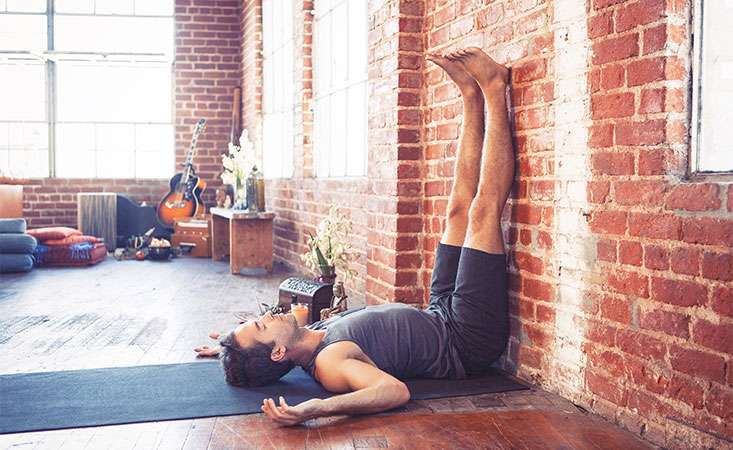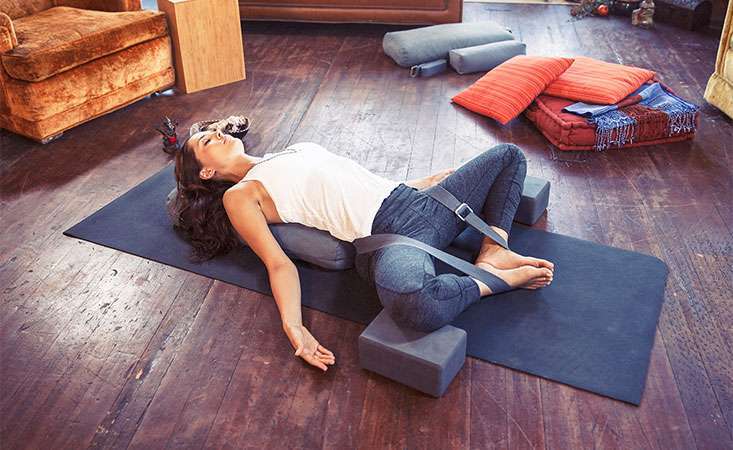
Basic breathing exercise to reduce symptoms of stress in the body and mind
Editor’s note: The coronavirus disease (COVID-19) pandemic may cause additional stress and anxiety. It is now as important as ever to take care of yourself, including your mental health.
Here we share a few simple exercises to help manage stress from eminent, nationally recognized yoga and meditation teacher Lauren Eckstrom, who cared for her father with pancreatic cancer.

Basic breathing exercise to reduce symptoms of stress in the body and mind
Whether you’re a patient or caregiver moving through diagnosis and treatment, the symptoms of stress can manifest in your body, mind and relationships. Fortunately, the body is skilled at notifying you of the presence of stress, which may manifest through physical symptoms such as feelings of anxiety, lack of sleep, digestive issues or inflammation. These signals tell you it’s time to integrate self-care into your daily routine not only to help manage stress but also to get ahead of it in your life. The following is a simple breathing exercise and two restorative yoga postures you can do daily to create a ritual of stress management and self-care.
Breathing Exercise
- Begin by lying on your back. You can lie on the floor, on a yoga mat or in your bed. Make sure the back of your head is supported by a folded blanket or pillow. Close your eyes and allow your body to rest. Imagine your muscles softening and feel all the places where the back of your body is connected to the floor. From here, bring your attention to your breath. Simply notice your breath and allow your breath to be natural. There is nothing you need to change about your breath.
- After a few minutes resting here, you’ll begin to count your breath to help bring your body and mind into a state of balance. The practice of balanced breathing can support your nervous system, help focus your mind, and lower cortisol levels to reduce the symptoms of stress in the body-mind complex. As you enter this simple breathing practice, remember to honor your experience. If you become light-headed at any point, return to your natural breath. If your count feels too long or too short, change it to meet your personal needs.
- Take a full breath in through your nose, and exhale the breath out of your mouth. Repeat two more times allowing your body to soften. After the third round, when breathing through your nose, inhale slowly and smoothly to the count of four. Internally and silently count to yourself, “one, two, three, four.” Exhale back out of your nose to the count of four. Internally and silently repeat to yourself, “four, three, two, one.” Repeat this cycle of inhaling to the count of four and exhaling to the count of four for 5 to 8 rounds. After your final round, take a few natural, steady breaths. You might take some time to notice how your body and your mind feel after focusing on balanced breathing.

Restorative yoga pose to shift the nervous system from “fight-flight-freeze” mode
As you return to breathing in a natural way, you can choose to remain reclining for several more minutes or integrate two more restorative yoga poses to help further shift your nervous system into a state of rest and reset.
Restorative Yoga Exercises
- Sweep your legs up a wall or over the edge of a low bed or chair. Again, make sure the back of your head is resting on a soft surface such as a folded blanket or thin pillow. Rest here for 5 to 15 minutes. Elevating the legs in this way can help with lymphatic drainage (detoxification and disposal of metabolic waste), while slightly energizing you.
- Return to a reclining position and bring the soles of your feet together, as the knees open away from each other. If the hips are tight or the knees are sensitive, place pillows, folded blankets or yoga blocks under each knee for support. Remain here for 5 to 15 minutes.

Yoga exercise to relieve physical tension and mental distress
Restorative yoga and the simple practice of balanced breathing can help shift the nervous system from “fight-flight-freeze” into the parasympathetic nervous system where healing and rejuvenation take place. Give yourself the gift of a daily practice to help ease physical tension and mental distress, and observe how your acts of self-care help support your journey of healing as well as your relationships.
If you are a patient considering a yoga practice, it is important to consult with your doctor beforehand.
















